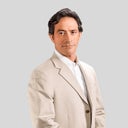my left breast nipple is dented. i've been ok with it, yet i saw a story in the news that it could be a sign of breast cancer. so now i am really scared! what's the cause of inverted nipples and is it something i need to get checked out right away?
Answers (15)
From board-certified doctors and trusted medical professionals
Dr. Jerome Edelstein, MD

Dr. Jerome Edelstein, MD
Certified Plastic Surgeon
Answer
Dr. David Stoker, MD

Dr. David Stoker, MD
Board Certified Plastic Surgeon
Answer
Dr. Luis Macias, MD, FACS

Dr. Luis Macias, MD, FACS
Board Certified Plastic Surgeon
Answer
Dr. Otto Joseph Placik, MD

Dr. Otto Joseph Placik, MD
Board Certified Plastic Surgeon
Answer
Dr. Raffy Karamanoukian, MD, FACS

Dr. Raffy Karamanoukian, MD, FACS
Board Certified Plastic Surgeon
Answer
Dr. Kevin Brenner, MD, FACS

Dr. Kevin Brenner, MD, FACS
Board Certified Plastic Surgeon
Answer
Dr. Ziyad Hammoudeh, MD
Dr. Ziyad Hammoudeh, MD
Board Certified Plastic Surgeon
Answer
Dr. Connie Hiers, MD, FACS
Dr. Connie Hiers, MD, FACS
Board Certified Plastic Surgeon
Answer
Dr. Tom J. Pousti, MD
Dr. Tom J. Pousti, MD
Board Certified Plastic Surgeon
Answer
More Inverted Nipple Surgery Questions
See all Inverted Nipple Surgery Q&AWE SEND PRETTY
EMAILS
What’s trending? Who’s turning heads? Which TikTok myths need busting? We’ve got you. No fluff, no gatekeeping—just real talk. Get our free, unfiltered newsletter.